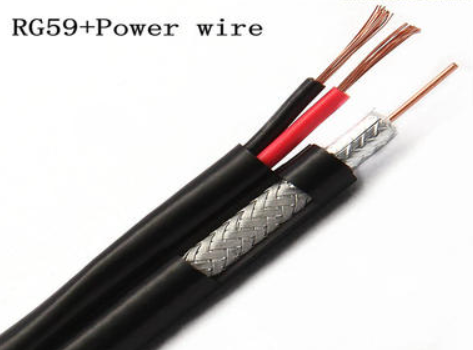
What are the Differences between RG59 and RG6 Cable
When it comes to transmitting video signals, choosing the right cable is crucial for achieving optimal performance and signal integrity. Two commonly used coaxial cable types are RG59 and RG6.
In this post, we will explore the key differences between RG59 and RG6 cables, focusing on their definitions, signal loss, shielding, frequency range, and applications. Understanding these distinctions will help you make an informed decision when selecting the appropriate cable for your specific needs.
In this post, we will explore the key differences between RG59 and RG6 cables, focusing on their definitions, signal loss, shielding, frequency range, and applications. Understanding these distinctions will help you make an informed decision when selecting the appropriate cable for your specific needs.
Definition
RG59 and RG6 are both types of coaxial cables, which consist of a central conductor, insulating material, shielding, and an outer jacket. The central conductor carries the electrical signal, surrounded by insulation, followed by a metallic shielding layer and a protective outer jacket. Despite their similar construction, there are notable differences between RG59 and RG6 cables.
Signal Loss
Signal loss refers to the attenuation of the signal as it travels through the cable.
RG6 cables generally have lower signal loss compared to RG59 cables. This is primarily due to the difference in the size of their central conductors.
RG59 cables typically have a thinner central conductor, resulting in higher resistance and greater signal loss over longer distances. RG6 cables, with their thicker central conductor, offer lower resistance and reduced signal loss.
RG6 cables generally have lower signal loss compared to RG59 cables. This is primarily due to the difference in the size of their central conductors.
RG59 cables typically have a thinner central conductor, resulting in higher resistance and greater signal loss over longer distances. RG6 cables, with their thicker central conductor, offer lower resistance and reduced signal loss.
Shielding
Shielding plays a crucial role in minimizing interference from external electromagnetic signals. Both RG59 and RG6 cables feature shielding, but RG6 cables typically have better shielding capabilities.
RG59 cables commonly utilize a foil shield, while RG6 cables often incorporate both a foil and a braided shield. The additional braided shield in RG6 cables provides superior protection against electromagnetic interference (EMI) and radio frequency interference (RFI), making them more suitable for environments with higher interference levels.
RG59 cables commonly utilize a foil shield, while RG6 cables often incorporate both a foil and a braided shield. The additional braided shield in RG6 cables provides superior protection against electromagnetic interference (EMI) and radio frequency interference (RFI), making them more suitable for environments with higher interference levels.
Frequency Range
The frequency range of a cable determines its ability to transmit different types of signals. RG59 cables are designed for lower frequency signals, typically ranging up to 50 MHz.
They are commonly used for analog video signals, such as CCTV systems and older analog TV connections. On the other hand, RG6 cables offer a broader frequency range, typically up to 3 GHz. This makes RG6 cables ideal for transmitting high-frequency signals, including digital video, HDTV, satellite TV, and cable internet.
They are commonly used for analog video signals, such as CCTV systems and older analog TV connections. On the other hand, RG6 cables offer a broader frequency range, typically up to 3 GHz. This makes RG6 cables ideal for transmitting high-frequency signals, including digital video, HDTV, satellite TV, and cable internet.
Applications
The choice between RG59 and RG6 cables depends on the specific application requirements. RG59 cables are often found in closed-circuit television (CCTV) systems, video surveillance installations, and older analog TV connections.
They are still suitable for shorter cable runs or situations where lower frequency signals are sufficient. RG6 cables, with their superior performance, are widely used in modern digital video applications, including HDTV, satellite TV, cable internet, and home theater setups. They are better suited for longer cable runs and situations where higher frequency signals are involved.
They are still suitable for shorter cable runs or situations where lower frequency signals are sufficient. RG6 cables, with their superior performance, are widely used in modern digital video applications, including HDTV, satellite TV, cable internet, and home theater setups. They are better suited for longer cable runs and situations where higher frequency signals are involved.
Conclusion
In summary, RG59 and RG6 cables differ in their signal loss, shielding capabilities, frequency range, and applications.
While RG59 cables are suitable for lower-frequency analog signals over shorter distances, RG6 cables offer lower signal loss, better shielding, and a broader frequency range, making them ideal for high-frequency digital signals over longer distances.
While RG59 cables are suitable for lower-frequency analog signals over shorter distances, RG6 cables offer lower signal loss, better shielding, and a broader frequency range, making them ideal for high-frequency digital signals over longer distances.







Leave a comment